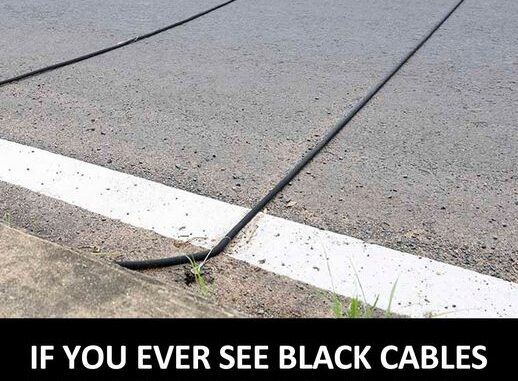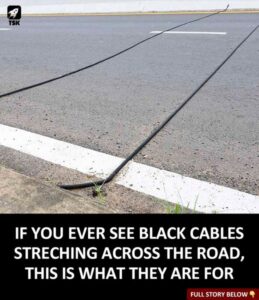
As you navigate the highways and byways of your daily commute, you may have encountered an intriguing sight: black cables stretched across the road, almost like stealthy sentinels of the pavement. But what exactly are these enigmatic tubes, and what role do they play in our transportation infrastructure? The answer lies in the realm of traffic management and data collection.1
These unassuming black cables are, in fact, portable traffic counters strategically placed by transportation authorities for research purposes. Primarily used by local agencies, these tubes hold vital insights into road usage and traffic patterns. With more than 12,000 of these traffic counters scattered across the state, they provide invaluable data that fuels the planning and development of our road networks.

Decoding the Mechanism Behind the Black Cables
The technology driving these unobtrusive rubber cords is elegantly simple yet remarkably effective.2 Each time a vehicle’s tires contact the tube, a burst of air is triggered, setting off an electrical signal recorded by a counter device. This ingenious pneumatic mechanism can track the volume of vehicles passing over a road within a given timeframe. Transportation agencies can gain insights into peak traffic congestion periods by analyzing the intervals between these air bursts. When deployed in pairs, these tubes provide even richer data, enabling the determination of vehicle class, speed, and direction.
Such information is far from trivial—it forms the bedrock for informed decisions on road signage, speed limits, and allocation of transportation budgets. Based on these insights, municipalities can fine-tune their traffic management strategies, ensuring that road systems remain efficient and safe for all road users.
Leave a Reply